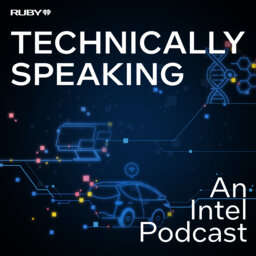Season 2 Episode 3 - The AI that lives Inside your PC: Revolutionizing Computing
For as long as humans have used computers, we have sought to make them faster, smarter, and more capable. So what new potential can harnessing the power of AI in PCs promise? What if every computer could use AI technology to unleash new capabilities that will benefit anyone and everyone who uses a computer. Plus, imagine data security that AI PCs can offer that Cloud AI cannot. Intel Vice President Robert Hallock helps us explore how computers equipped with artificial intelligence–like the new Intel Core Ultra Processor–are transforming productivity and IT operations.
Learn more about how Intel is leading the charge in the AI Revolution at intel.com/AIeverywhere
 Technically Speaking: An Intel Podcast
Technically Speaking: An Intel Podcast


